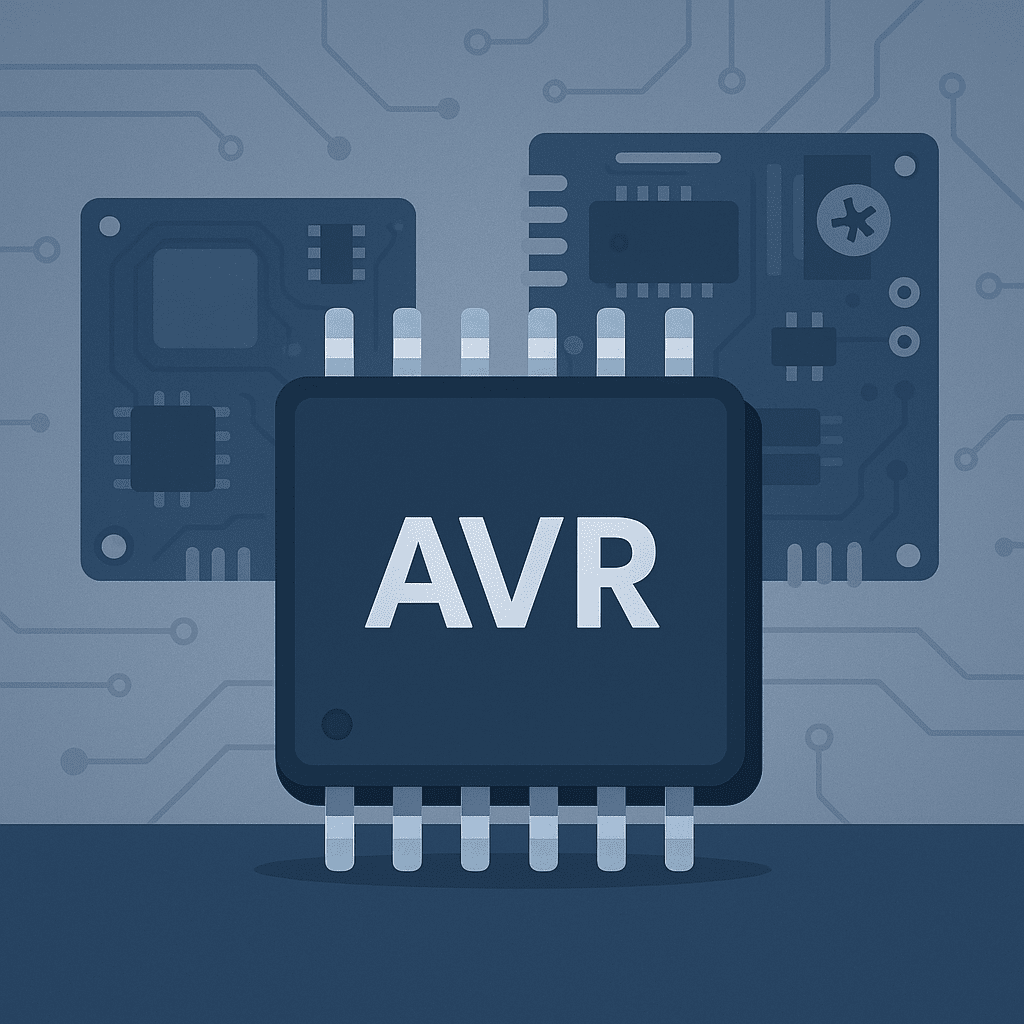AVR Microcontroller Programming in C A Complete Guide for Beginners and Enthusiasts

AVR Microcontroller Programming in C A Complete Guide for Beginners and Enthusiasts , Programming AVR microcontrollers with the C language opens up a powerful and accessible path into embedded systems development. Unlike assembly language, which deals directly with low-level operations and can be cumbersome for larger applications, C offers a balance of control and efficiency. In this article, we explore the differences between C and assembly for AVR, explain how to work directly with hardware registers in C, and dive into essential topics like the use of volatile variables, function structures, and writing clean, maintainable firmware.
Why C Over Assembly for AVR Microcontrollers?
While assembly language gives you unmatched control over the processor, it comes at the cost of readability, maintainability, and development speed. Here’s a quick comparison:
| Feature | Assembly | C Language |
|---|---|---|
| Readability | Low | High |
| Development Time | Slow | Fast |
| Portability | Very low (chip-specific) | High (code reuse possible) |
| Learning Curve | Steep | Moderate |
| Performance | Max possible | Near-optimal |
In practice, most developers choose C because it strikes a solid balance: it’s high-level enough to be productive, yet low-level enough to directly manipulate memory and I/O.
Understanding Registers and I/O Access in C
AVR microcontrollers use special function registers (SFRs) for direct hardware control. In assembly, you’d write:
LDI R16, 0xFF
OUT DDRB, R16In C, this becomes much cleaner:
DDRB = 0xFF; // Set all PORTB pins as outputs
PORTB = 0x00; // Set PORTB to lowThanks to header files like avr/io.h, register names are predefined, making your code readable and portable. Behind the scenes, the compiler translates this to efficient machine instructions.
Working with Bits
You can manipulate individual bits using bitwise operations:
PORTB |= (1 << PB0); // Set bit 0
PORTB &= ~(1 << PB1); // Clear bit 1This gives you precise control, just like assembly, but in a safer and cleaner way.
The Role of volatile in Embedded C
In embedded programming, the volatile keyword is a lifesaver. It tells the compiler: “Hey, this variable might change outside of the current flow of code.”
Use it when:
- Reading from or writing to hardware registers
- Working with variables modified in an ISR (interrupt service routine)
Example:
volatile uint8_t flag = 0;
ISR(INT0_vect) {
flag = 1; // Interrupt sets the flag
}
int main() {
while (!flag); // Wait for interrupt to set the flag
// Proceed after interrupt
}Without volatile, the compiler might optimize the loop away entirely!
Structuring Code with Functions
Using functions in C helps organize code logically. Consider a simple LED blinking program:
void setup() {
DDRB |= (1 << PB0); // Set PB0 as output
}
void loop() {
PORTB ^= (1 << PB0); // Toggle LED
_delay_ms(500);
}
int main() {
setup();
while (1) {
loop();
}
}This style mimics Arduino’s structure, making the code intuitive for beginners while remaining efficient.
Direct Hardware Interaction: Is C Enough?
Absolutely. While you won’t be writing cycle-perfect timing loops like in assembly, modern compilers are smart. GCC for AVR generates highly optimized code, and for 90% of applications, you won’t miss the performance edge of assembly.
If you ever need assembly-level control, C allows inline assembly:
asm("NOP");But use this sparingly and only when necessary.
Best Practices for AVR C Programming
- Always include the correct headers:
#include <avr/io.h> #include <util/delay.h> #include <avr/interrupt.h> - Use constants and macros:
#define LED_PIN PB0 PORTB |= (1 << LED_PIN); - Debounce inputs: Mechanical buttons often produce noisy signals.
- Document your code: Explain why a register is being configured a certain way.
- Test on real hardware: Simulators are great, but real-world behavior can differ.
Frequently Asked Questions (FAQ)
Q1: Is C fast enough for real-time AVR applications?
A1: Yes. For most timing-critical tasks, C compilers produce highly optimized code. You can fine-tune further using inline assembly or optimization flags.
Q2: Should I learn assembly before C?
A2: Not necessary. Start with C, then explore assembly for advanced control or optimization.
Q3: What IDEs are good for AVR C development?
A3: Atmel Studio, MPLAB X (with AVR support), and VS Code with PlatformIO are excellent choices.
Q4: How do I debug AVR C code?
A4: Use a hardware debugger (e.g., Atmel-ICE) or simulate using tools like Proteus or SimAVR.
Conclusion
C is the sweet spot for AVR microcontroller programming. It gives you the flexibility to control hardware directly, write maintainable code, and develop applications efficiently. By understanding the nuances of volatile, working with registers, and structuring your code well, you can harness the full power of AVR chips without the complexity of assembly.
If you found this article, AVR Microcontroller Programming in C A Complete Guide for Beginners and Enthusiasts, helpful, share it with your friends and visit our website for more tutorials.